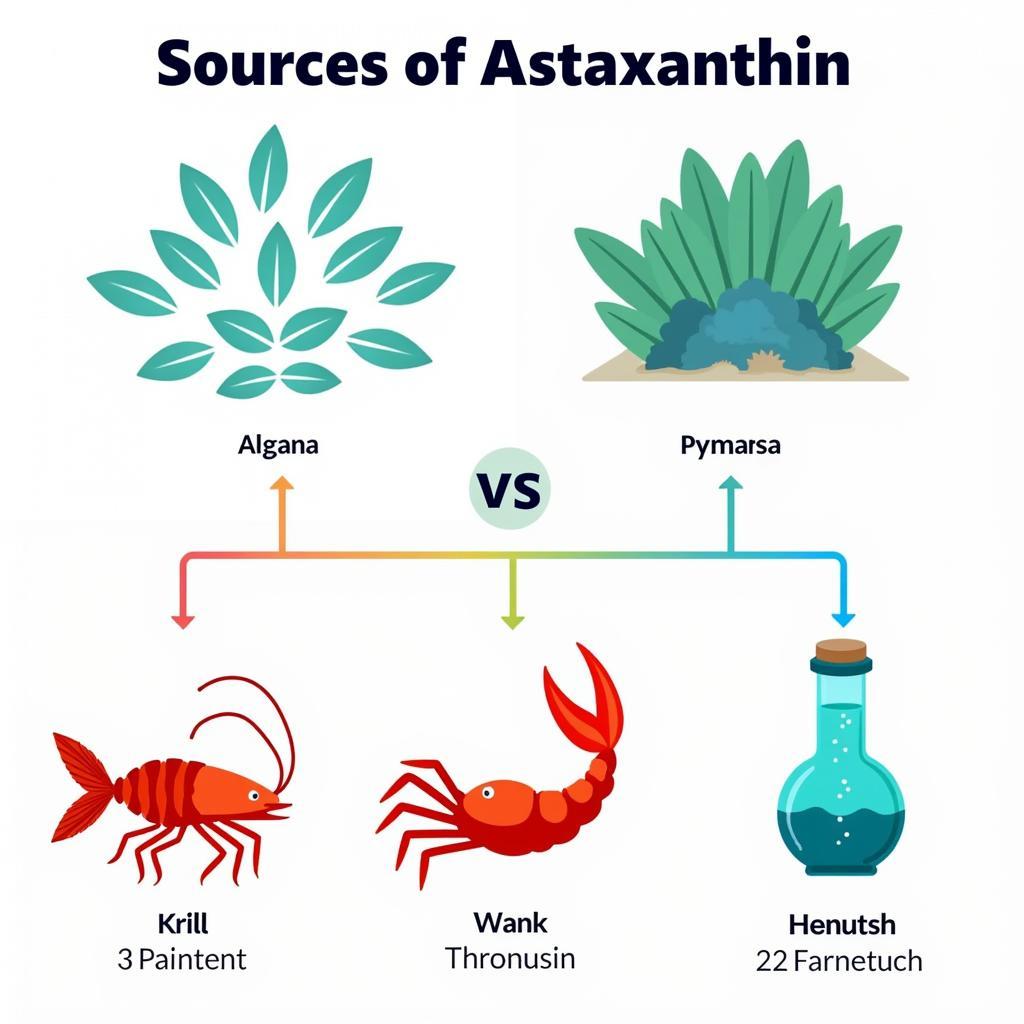Is color added to salmon bad? This is a common question among health-conscious consumers. The vibrant pink hue of farmed salmon often raises concerns about artificial dyes and their potential health impacts. Let’s dive deep into this topic and uncover the truth about color in salmon.
Understanding Salmon Color: Wild vs. Farmed
The color of salmon flesh comes from carotenoids, specifically astaxanthin, a naturally occurring pigment found in the algae and krill that wild salmon consume. This gives wild salmon their characteristic pink-red color. Farmed salmon, however, often have a greyish-white flesh in their natural state.
Why is Color Added to Farmed Salmon?
Consumers associate the pink-red color with freshness and quality. To meet this expectation, farmers often supplement the feed of farmed salmon with astaxanthin, either synthetically produced or derived from natural sources. This practice aims to replicate the color of wild salmon and enhance the market appeal of the farmed fish.
Is Synthetic Astaxanthin Harmful?
The safety of synthetic astaxanthin has been a subject of debate. While regulatory bodies generally consider it safe for consumption, some studies have raised concerns about potential health risks associated with high doses. It’s important to note that the levels of astaxanthin used in salmon feed are typically much lower than the doses used in these studies.
Natural vs. Synthetic Astaxanthin: What’s the Difference?
While both natural and synthetic astaxanthin have the same chemical structure, their production methods differ. Natural astaxanthin is extracted from sources like algae and krill, while synthetic astaxanthin is produced through chemical processes. Some argue that natural astaxanthin may offer greater health benefits due to the presence of other beneficial compounds found in the natural sources.
 Astaxanthin Sources
Astaxanthin Sources
Choosing Salmon Wisely: What to Look For
When purchasing salmon, consider the following:
- Look for labels indicating “color added”: This transparency allows you to make informed choices.
- Consider wild-caught salmon: While often more expensive, wild salmon naturally contains astaxanthin and other beneficial nutrients.
- Choose reputable brands: Look for brands committed to sustainable farming practices and responsible sourcing of astaxanthin.
Is it bad to eat salmon with added color?
Not necessarily. The FDA has approved the use of astaxanthin in salmon feed, and it’s generally considered safe to consume. However, if you are concerned about synthetic additives, opt for wild-caught salmon or farmed salmon specifically labeled as using natural astaxanthin.
Expert Insights
“Consumers should be aware of the difference between natural and synthetic astaxanthin,” says Dr. Emily Carter, a registered dietitian specializing in seafood nutrition. “While both provide the characteristic pink color, natural astaxanthin may offer additional health benefits.”
Another expert, Dr. James Miller, a marine biologist, adds, “Sustainable farming practices are crucial for minimizing the environmental impact of salmon aquaculture and ensuring the responsible use of astaxanthin.”
Conclusion
Is color added to salmon bad? The answer isn’t a simple yes or no. While the practice of adding color to farmed salmon is primarily for aesthetic purposes, the safety concerns surrounding synthetic astaxanthin warrant consideration. By understanding the differences between wild and farmed salmon, natural and synthetic astaxanthin, and making informed choices at the grocery store, you can enjoy the nutritional benefits of salmon while aligning with your personal health and environmental values. Choosing salmon wisely empowers you to enjoy this nutritious fish with confidence.
FAQs
- What is astaxanthin?
- Why is astaxanthin added to farmed salmon?
- Is synthetic astaxanthin safe to eat?
- What are the benefits of eating salmon?
- How can I tell if color has been added to salmon?
- What is the difference between wild-caught and farmed salmon?
- Are there any sustainable salmon farming practices?
Related Articles:
- The Health Benefits of Eating Salmon
- Wild Salmon vs. Farmed Salmon: Which is Better?
- Sustainable Seafood Choices
Need support? Contact us at Phone Number: 0373298888, Email: [email protected] Or visit us at: 86 Cau Giay, Hanoi. We have a 24/7 customer support team.

